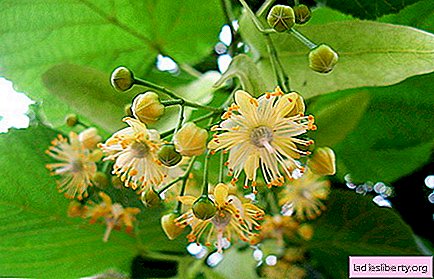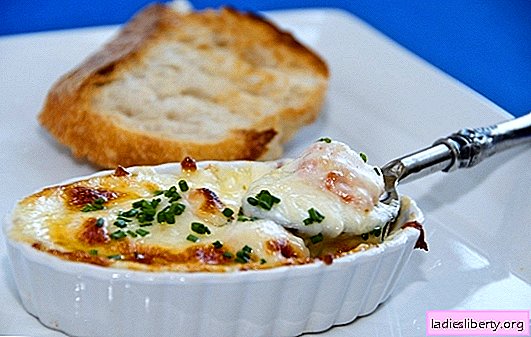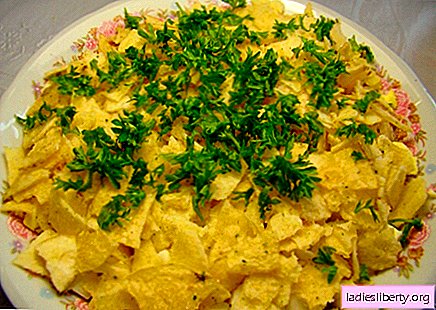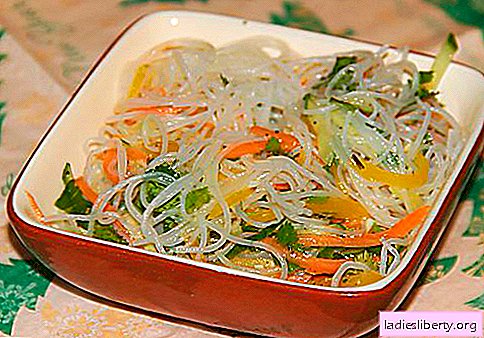
Lipa - general description
Linden (lat. Tilia) is a tall (up to 30-40 m tall) deciduous tree with a dense spherical or cylindrical crown. It has a long lifespan of about 300 years. In folk medicine, a bast or ureter can sometimes be called. Linden bark has a characteristic dark gray hue; in old trees, longitudinal cracks run along the trunk. The leaves have a rounded, pointed shape at the end, grow on thin long stalks, the surface of the leaf is dark green above, and the bottom is light green with a bluish tint.
Linden blooms in the first half of summer, by August the fruits begin to ripen. The flowers of the plant have a yellowish-white color, they are collected in inflorescences in the form of upward semi-umbrellas, they have a pleasant aroma. The fruit is an oval nut with one or two seeds. The duration of flowering is from 1 week to 2-2.5 weeks (in forests). Linden is widely used in medicine, and is also used as a honey plant.
Linden - species and places of growth
In the world there are a large number of species of linden. This linden is small-leaved, Japanese, large-leaved, Amur, ordinary, Manchurian, American (black), Caucasian, European, Siberian, felt (silver). In addition, each species is divided into several varieties, so the Linden family (lat. Tiliaceae) can be called one of the most common hardwood species.
On the European territory of Russia, the most common is small-leaved linden, otherwise called cordate (lat. Tilia cordata). In addition, it grows in the Caucasus, Crimea, Western Siberia and the southern regions of the Urals. It prefers fertile soils in shady broad-leaved forests, can form clean massifs, and can grow as part of a mixed forest. Does not tolerate excess moisture.
Lipa - healing properties
The medicinal properties of linden are successfully used in both folk and official medicine. A wide range of its effects is due to the chemical composition of the flowers, which includes glycosides, tannins, carotene and ascorbic acid (vitamins A and C), saponins, flavonoids, coumarin, as well as essential oils and trace elements.
Galenic compounds increase the secretion of gastric juice and bile, improve diuresis and have diaphoretic properties. Preparations based on linden blossom can gently calm the nervous system, as well as have anti-inflammatory and antipyretic effects due to the presence of bioflavonoids in the composition. In addition, linden infusions accelerate the regeneration of skin tissues.
Lipa - dosage forms
In folk medicine, almost all parts of the plant are used. Coal powder is used to treat flatulence and diarrhea in case of poisoning and intestinal disorders. Tar is used in the treatment of skin diseases. A decoction from the bark is a folk remedy for the treatment of hemorrhoids, burns and gout. Lime buds and leaves in the form of a decoction or powder from freshly picked raw materials help with boils, burns, mastitis, ulcers. But the linden inflorescences, from which decoctions and infusions are prepared, are most often used for medicinal purposes. They are used to gargle, for colds, as a diaphoretic, as well as for headache, rheumatism and migraine.
Lipa - recipes
An infusion of linden flowers is prepared at the rate of 3 tbsp. tablespoons of dry crushed linden blossom (sold in a pharmacy) in a glass of hot water (200 ml). The mixture is heated in a water bath for 15 minutes, then closed with a lid and cooled. After cooling, the volume of infusion should be brought back to 200 ml, adding boiled water. You need to take the infusion hot in a glass 2-3 times a day. Shelf life in the refrigerator - no more than 2 days. It is an excellent diaphoretic, diuretic and antimicrobial agent.
Infusion for external use is prepared similarly, but use 6 tbsp. spoons of lime on a glass of boiling water. This product is intended for rinsing or compresses for oily skin.
A decoction of linden flowers is prepared from 20 g of linden blossom, boiled for 10 minutes in 200 ml of water.
In addition, young linden leaves can be added to salads, prepare soft drinks from them, and add linden blossom to tea. This will serve as a restorative and tonic.
Lipa - contraindications
Linden is contraindicated only in the presence of an allergy to honey plants. In other cases, its use should be moderate in nature, since linden decoctions and infusions have a strong diaphoretic and diuretic property. To drink teas or other drinks made of linden blossom often, and even more so constantly, in no case is not recommended.
Comments











